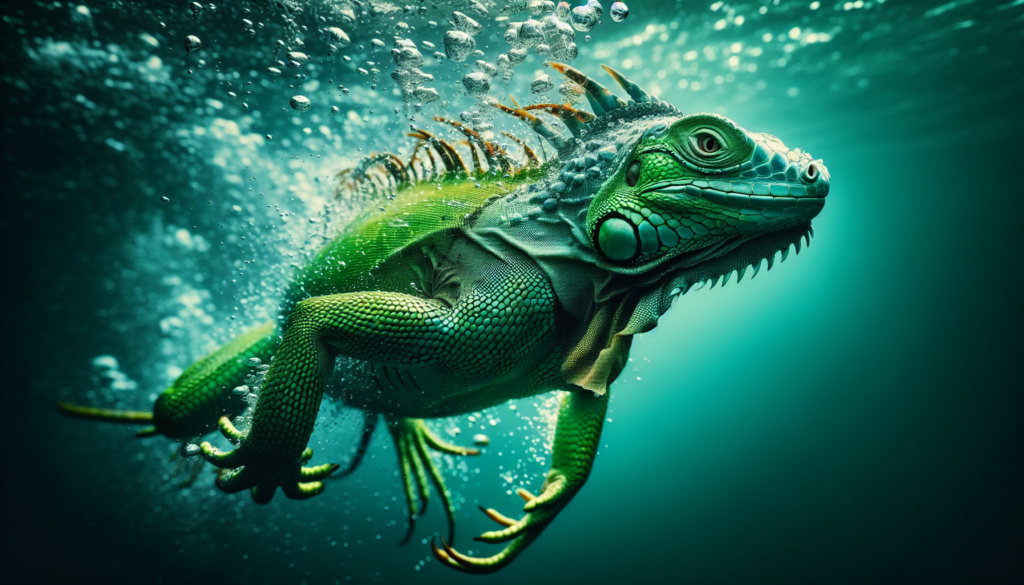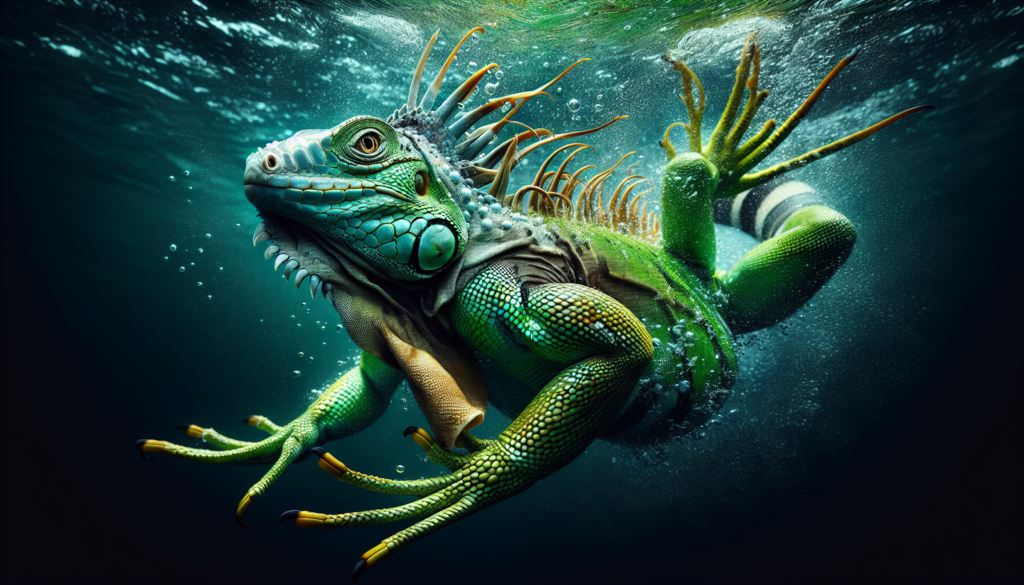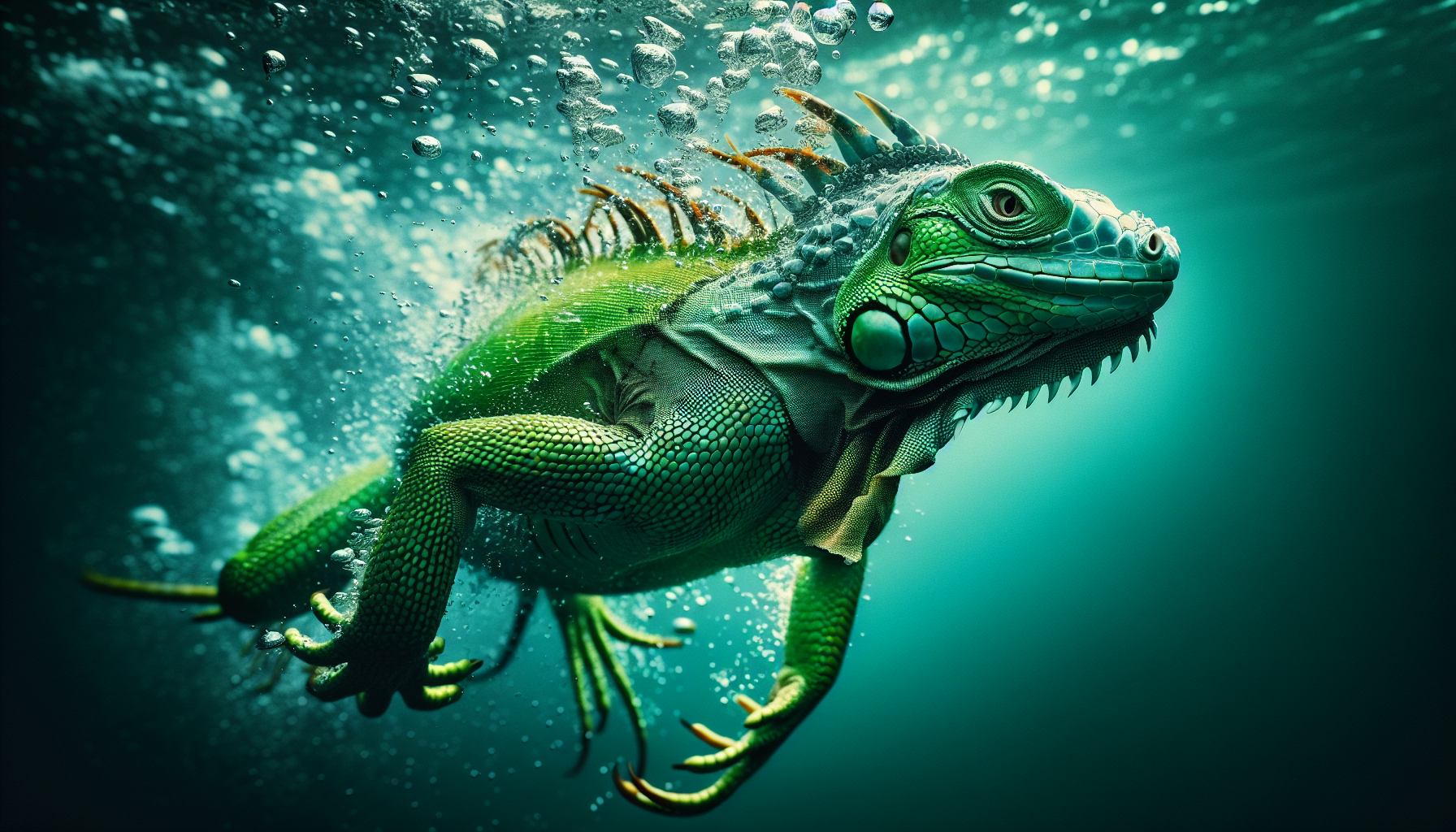Imagine you’re walking through a lush tropical rainforest, the vibrant calls of exotic birds filling the air. Suddenly, you catch sight of a stunning creature perched on a tree branch – a magnificent green iguana. But as you admire its elegant form, a question pops into your mind: can these enchanting creatures swim? In this article, we will explore the fascinating world of green iguanas and find out if they possess the ability to navigate through water effortlessly. Prepare to uncover the secrets of these majestic reptiles as we dive into the realm of the green iguana’s aquatic prowess.
Can Green Iguanas Swim?
Green iguanas, also known as the common iguana (Iguana iguana), are fascinating creatures with unique physical characteristics and behaviors. One common question that arises when discussing these reptiles is whether or not they can swim. In this article, we will explore the physical characteristics of green iguanas, the importance of water for their survival, and their swimming abilities.
Physical Characteristics of Green Iguanas
Body Structure of Green Iguanas
Green iguanas have a distinct body structure that is adapted for their arboreal lifestyle. They have a long and slender body, with strong limbs and sharp claws that aid in climbing trees. Their body is covered in a scaly skin, which provides protection and helps prevent water loss. The skin coloration of green iguanas can vary, ranging from bright green to dull brown, allowing them to blend into their surroundings.
Tail Adaptations of Green Iguanas
One of the most remarkable features of green iguanas is their tail. Their tail is long and muscular, making up a significant portion of their body length. The tail is prehensile, meaning it is capable of grasping and holding onto objects. This adaptation enables green iguanas to navigate their arboreal habitat with ease. In addition, the tail plays an important role in swimming, acting as a propeller that propels them through the water.

Importance of Water for Green Iguanas
Water as a Source of Hydration
Water is crucial for the survival of green iguanas. Like all living organisms, they require water for hydration. Despite their adaptation to dry environments, green iguanas will actively seek out water sources to drink and replenish their body fluids. Adequate hydration is essential for their overall health and proper physiological functioning.
Water for Thermoregulation
In addition to hydration, water also plays a vital role in the thermoregulation of green iguanas. These ectothermic reptiles rely on external sources, such as sunlight and water, to regulate their body temperature. By immersing themselves in water, green iguanas can cool down on hot days as water conducts heat away from their bodies more efficiently than air.
Behavioral Aspects of Green Iguanas and Water
Green iguanas exhibit interesting behaviors when it comes to water. They are known to bask in or near water bodies, using the surrounding environment to regulate their body temperature effectively. Furthermore, water can act as a means of escape for green iguanas, as they are capable swimmers and can quickly and gracefully maneuver through it. Water may also serve as a social gathering point for these reptiles, providing opportunities for interactions with conspecifics.
Swimming Abilities of Green Iguanas
Natural Habitat of Green Iguanas
Green iguanas are native to the rainforests and tropical areas of Central and South America, where they inhabit both terrestrial and arboreal environments. While they are primarily arboreal, spending most of their time in trees, they are also adept swimmers due to their close association with water sources in their natural habitat.
Scenarios Where Green Iguanas Swim
Although green iguanas are not obligate swimmers, they are often found in close proximity to water bodies such as rivers, lakes, and swamps. The need to cross bodies of water or escape from predators may prompt green iguanas to swim. Additionally, during the mating season, male iguanas may swim in search of females or to access new territories.
Swimming Techniques of Green Iguanas
When swimming, green iguanas employ a unique technique that utilizes their specialized tail and limbs. They use their legs in a paddling motion, similar to the movements of other reptiles such as turtles. Meanwhile, their tail propels them forward, acting as a powerful and efficient propeller. This combination of tail and limb movements allows green iguanas to navigate the water with relative ease.
Speed and Agility in Water
Green iguanas are surprisingly agile in the water, despite their predominantly arboreal lifestyle. They can swim swiftly, relying on their powerful limbs and streamlined body shape to glide through the water. Although they are not the fastest swimmers among reptiles, their agility in the water enables them to escape from potential threats and explore their aquatic surroundings.
Factors Affecting Swimming Abilities
The swimming abilities of green iguanas can be influenced by various factors. The size and weight of an iguana can affect its buoyancy and maneuverability in water. Larger individuals may find it more challenging to swim efficiently compared to smaller ones. Additionally, environmental conditions such as water temperature, currents, and turbulence can impact the swimming abilities of green iguanas.

In conclusion
Green iguanas possess the ability to swim, thanks to their unique physical characteristics and adaptations. While they are primarily arboreal creatures, their association with water bodies in their natural habitat and their proficiency in swimming make them adaptable to a wide range of environments. Understanding the swimming abilities of green iguanas not only sheds light on their natural behavior but also allows us to appreciate the remarkable diversity and adaptability found within the animal kingdom.
